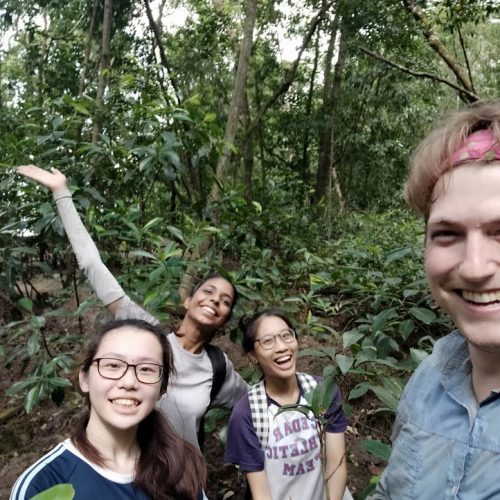
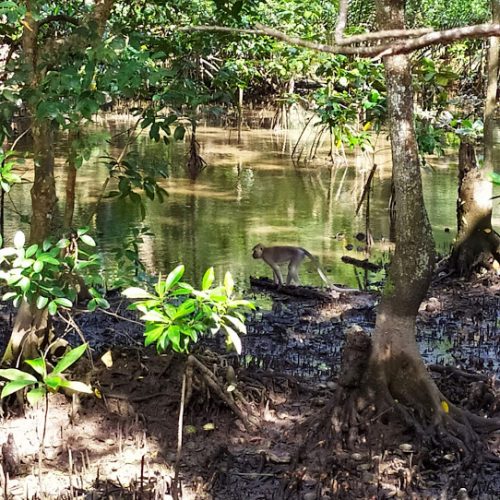
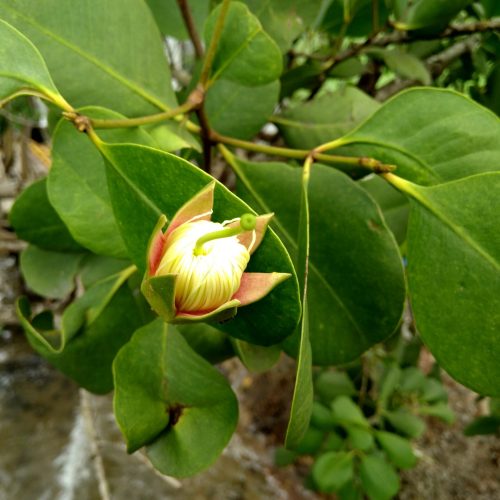
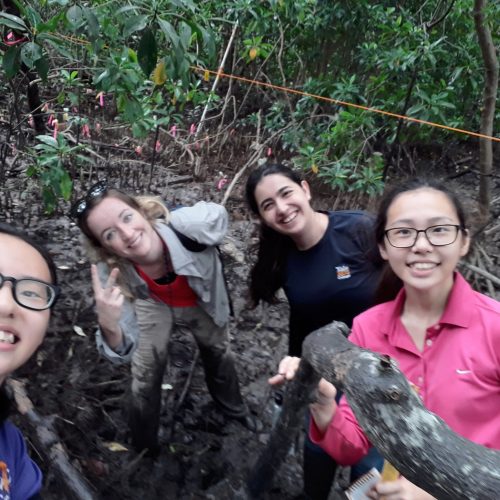
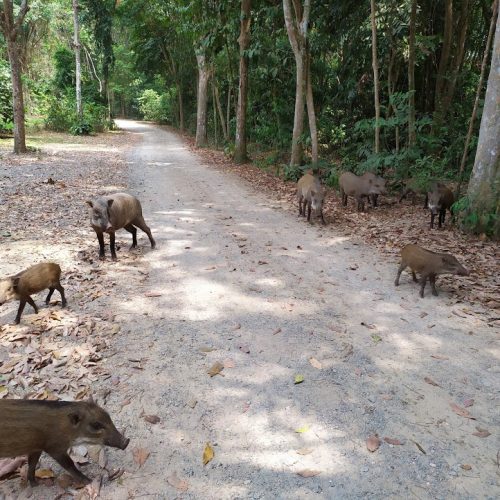

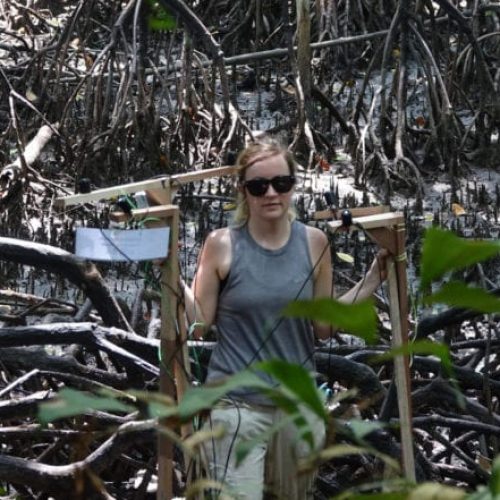
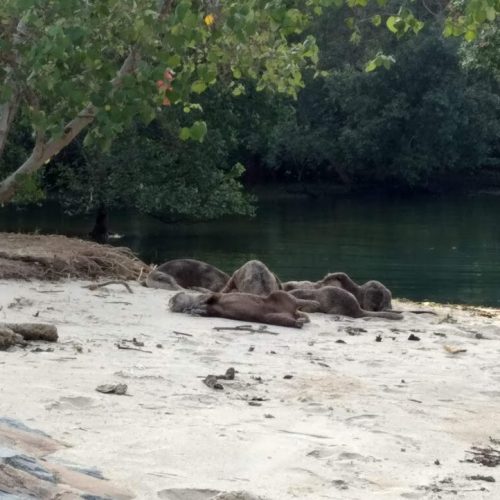
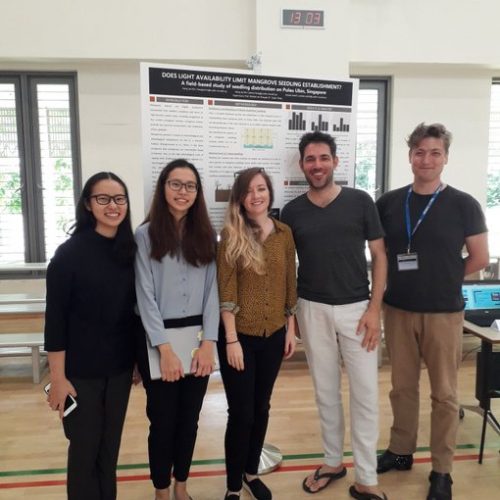
Singapore has lost some 95% of its historic mangrove cover to urban development and land reclamation. We work throughout Singapore’s precious remaining mangrove patches to understand how these resilient forests are responding to disturbance. Specifically, our work has focused on: seedling establishment and survival as constrained by inundation and light availability; species composition across various scales; and microbial communities associated with particular mangrove genera.
Team

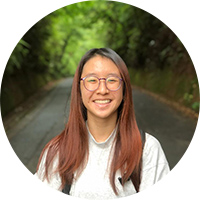

Regeneration of mangrove forests on Pulau Ubin
Our seedling study took place from summer 2019 to summer 2020. This unique study tracked survival of thousands of wildling seedlings over three surveys. For an initial stratified subset, we quantified light conditions, inundation frequency, and tracked growth across the year. The abiotic variables were also assessed along forest transects.
Despite overall high mortality, there were good relationships between inundation frequency, light availability, and survival for certain species. We are working to publish our findings, more results to come soon!
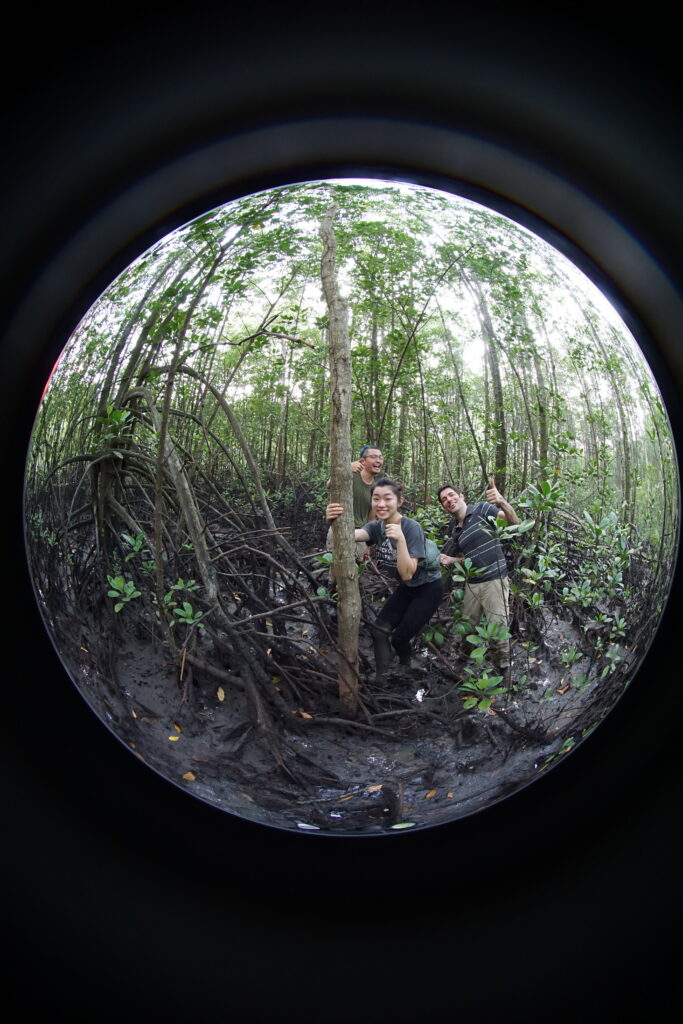
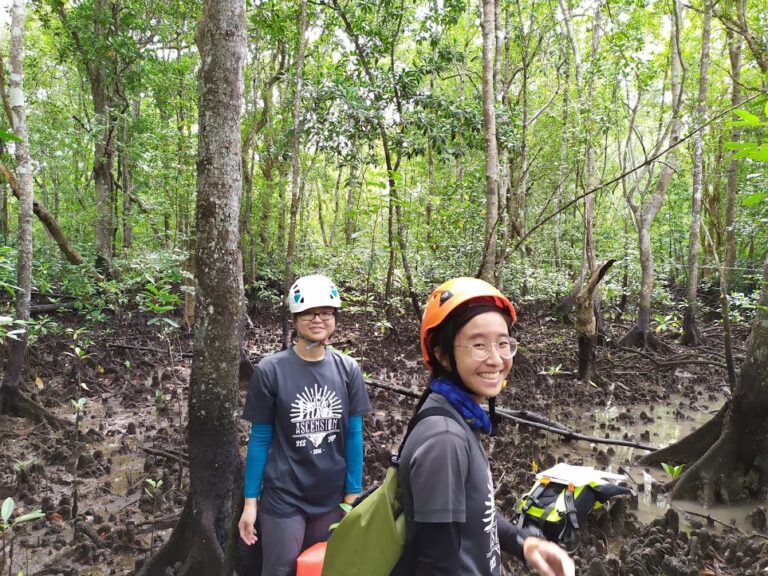
Long-Term Urban Mangrove Protection, Understanding, & Rehabilitation (LUMPUR)
We are now conducting an intensive forest inventory around Singapore to determine species distributions and biomass across the country. This also entails individual elevation measurements to examine inundation tolerances at the tree level. We have now covered 10,000 square meters of forest and are not slowing down! This summer, we plan to establish long-term monitoring plots to track major mangrove species in relationship with the spatial-temporal dynamics in abiotic conditions. These plots will offer a variety of research and teaching opportunities in the years to come.
This project also involves Dr. Ben Wainwright (Yale-NUS) who will process microbial DNA data collected from leaves and soil of Avicennia officinalis, Bruguiera gymnorhiza, and Rhizophora apiculata.
Collaborators




